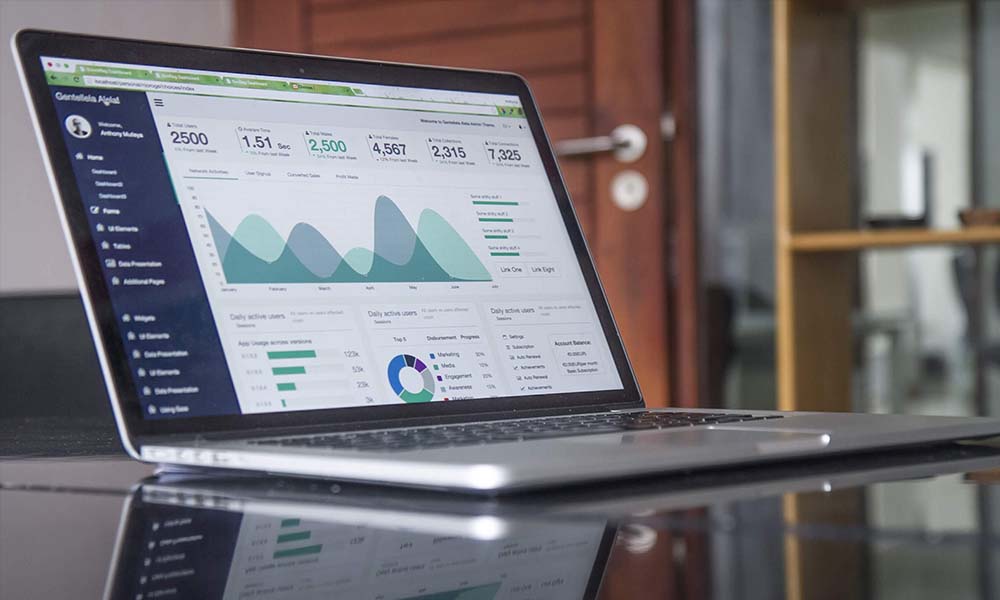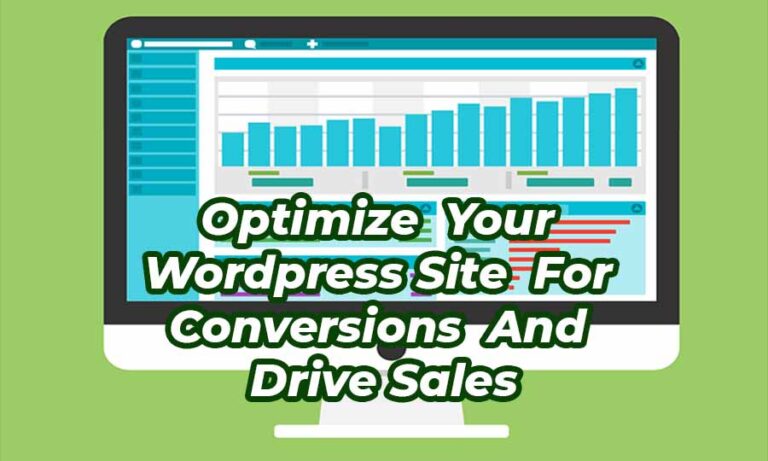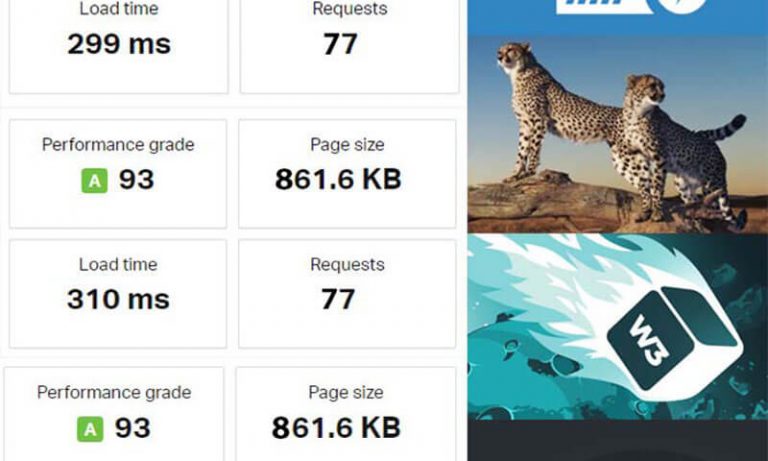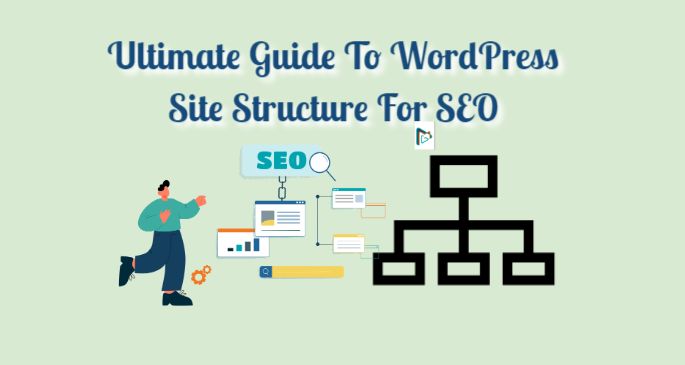Detailed Steps On How You Can Speed Up Your WordPress Site
Table of Contents
Today, you will learn how to maximize your website’s performance in 2023 with our free guide on how to speed up WordPress site. Learn the latest tips and tricks to improve page load times and enhance user experience with our step-by-step guide.
Speeding up a wordpress site is essential in providing a great user experience and stay ahead of the competition in search engine rankings. A slow website may cause visitors to abandon the page before it has even loaded, and search engines penalize slow sites by ranking them lower in their search results.
Optimizing your WordPress site by following some simple steps can greatly help to improve the performance of your website and make sure it loads quickly. One of the best ways to speed up a WordPress site is to reduce the number of plugins you have installed. Too many plugins can slow down your site and reduce its performance.
By following these steps I discussed below, you can ensure that your WordPress site runs smoothly and quickly.
1. Optimize Your WordPress images for faster page load times
The first step in speeding up your WordPress site is to optimize your images. Large image files can slow down your site, so it’s important to reduce their file sizes without losing quality.
WordPress image optimization plugins
There are several popular WordPress image optimization plugins that can help to speed up your site:
- WP Smush: This plugin automatically optimizes images as they are uploaded to your site. It uses lossless compression techniques to reduce file sizes without affecting image quality.
- EWWW Image Optimizer: This plugin can optimize images in a variety of formats and can also optimize images that have already been uploaded to your site.
- Imagify: This plugin also uses lossless compression techniques to optimize images and allows you to choose between three levels of compression.
- ShortPixel Image Optimizer: This plugin can optimize images in bulk and also provides the option to use lossy compression for even more significant file size reductions.
- Kraken.io: This plugin allows you to optimize images using both lossless and lossy compression techniques, and also provides the option to optimize images in bulk.
It’s worth noting that all of these plugins have a free version and a pro version with more features. It’s a good idea to start with the free version, then if you are satisfied with the results, you can upgrade to the pro version for more options.
2. Using a Content Delivery Network (CDN)
Another important step in speeding up your WordPress site is to use a Content Delivery Network (CDN). A CDN is a network of servers that are distributed around the world. When a user visits your site, the CDN will serve them the content from the nearest server, which will reduce the load time of your site.
Content Delivery Networks (CDNs) are a great way to speed up a WordPress site by reducing the load on your server and delivering content to visitors from a location that is closer to them.
Some of the best CDNs for WordPress sites include:
- Cloudflare: This CDN offers a free plan that includes basic DDoS protection, a Content Delivery Network, and a web application firewall.
- StackPath: This CDN offers a range of plans that include a content delivery network, DDoS protection, and a web application firewall.
- Amazon CloudFront: This CDN is part of the Amazon Web Services (AWS) ecosystem and is well-integrated with other AWS services.
- Akamai: One of the most well-known CDN provider, Akamai offers a range of plans that include a content delivery network, DDoS protection, and a web application firewall.
- MaxCDN: This CDN offers a range of plans that include a content delivery network, DDoS protection, and a web application firewall.
It’s worth noting that many of these providers offer a free trial period and you can try them out to see which one works best for your website. Additionally, all of them have different pricing plans and features, so it’s a good idea to compare them and choose the one that best fits your needs.
3. Implement caching techniques
Caching is another important way to speed up WordPress website. Caching is the process of storing a copy of your website’s pages and posts so that they can be served to visitors quickly. This eliminates the need for the server to generate the same page multiple times for different users, which can slow down your site. There are several caching plugins available for WordPress. Such are given below.
Here are the 3 best cache plugins for WordPress are W3 Total Cache, WP Super Cache, and WP Fastest Cache.
- W3 Total Cache – It offers an extensive range of features, such as page caching, minifying HTML, CSS and JavaScript, database caching, and more. It also offers content delivery network (CDN) integration, which allows you to serve your content faster to visitors all around the world.
- WP Super Cache – It is a lightweight plugin that provides simple features such as page caching, GZIP compression, and browser caching. It also supports CDN integration and can be used to set up a caching system with CloudFlare.
- WP Fastest Cache – It is a powerful plugin that offers page caching, GZIP compression, browser caching, and more. It also supports CDN integration and has an intuitive user interface.
Actually, there are even more amazing caching plugins you can find online (premium and free version) that you can use to speed up your wordpress site. So do not just limit yourself on the 3 cache plugins mentioned above.
All three plugins are great options for improving the performance of WordPress websites, and each offers unique features and benefits. Depending on your specific needs, one of these plugins could be the best choice for your website.
4. Choose a lightweight and minimalist theme
Another way to speed up your WordPress site is to use a lightweight theme. Some themes are heavy and include a lot of unnecessary code, which can slow down your site. A lightweight theme will use less code and be faster to load.
Using a lightweight and minimalist theme can help to speed up a WordPress site by reducing the amount of code that needs to be loaded.
best lightweight WordPress themes
Some of the best lightweight and minimalist WordPress themes include:
- Astra: Astra is a lightweight and customizable theme that is designed to work well with page builders like Elementor and Beaver Builder.
- GeneratePress: GeneratePress is a lightweight and customizable theme that is designed to be fast and easy to use.
- Neve: Neve is a lightweight and customizable theme that is designed to work well with page builders like Elementor and Beaver Builder.
- OceanWP: OceanWP is a lightweight and customizable theme that is designed to work well with page builders like Elementor and Beaver Builder.
- Schema: Schema Lite is a lightweight and customizable theme that is designed to be fast and easy to use.
It’s worth noting that these themes are designed to be lightweight and fast, but it’s still important to optimize your images and use a caching plugin to further speed up your site.
Additionally, you should also check the theme’s code quality, as well as its built-in features like responsiveness, security, and compatibility with different browsers and devices. Choosing a theme that is well-coded, lightweight and has the features you need will help to speed up your WordPress site.
5. Remove unnecessary plugins
In addition to using a lightweight theme, it’s also important to remove any unnecessary plugins. Each plugin that you use on your site can slow down your site, as they add extra code and resources to your site, which need to be loaded every time a page is accessed.
This is why it’s important to only use the plugins that are essential for your site and remove the ones that you don’t need. Removing unnecessary plugins can greatly improve your site’s loading time and overall performance.
By removing unnecessary plugins and only keeping the essential ones, you can greatly improve the speed and performance of your WordPress site.
6. Utilize a Content Management System (CMS)
Another way to speed up your WordPress site is to use a Content Management System (CMS) like Cloudways. This CMS is specifically designed to speed up WordPress sites and offers features such as caching, CDN, and image optimization.
These features can greatly improve your site’s performance by reducing the load on your server, delivering content from a location that is closer to your visitors, and optimizing your images. Cloudways also provides a user-friendly interface that makes it easy to set up and manage your site. It also offers a variety of caching options that can be customized to your site’s specific needs.
Additionally, Cloudways provides a built-in content delivery network (CDN) that can help to reduce the load time of your site by delivering your content from the closest server to your visitors. Finally, Cloudways also offers an image optimization feature that can help to reduce the size of your images, which in turn speeds up your site. By using a CMS like Cloudways, you can easily optimize your site’s performance and speed up your WordPress site.
7. Keep Your WordPress Site and plugins updated
Keeping your WordPress site updated is essential to ensure optimal performance and maximum security. When new updates are released, they typically include bug fixes, security patches, and performance improvements. To make sure your site is running efficiently and securely, make sure to update regularly.
Make sure you update plugins and themes as well, as these can also fix issues and security threats. Additionally, backup your data frequently to make sure you don’t lose any information. Keeping up with the latest updates will ensure your WordPress site is always running smoothly, efficiently, and securely.
8. Enable compression
Enabling compression on your WordPress site can help to speed up the loading time of your pages. Compression is the process of reducing the file size of your website’s resources such as HTML, CSS, and JavaScript files. When compression is enabled, these files are sent to the browser in a compressed format, which reduces the amount of data that needs to be transferred.
This, in turn, speeds up the loading time of your pages. You can enable compression on your WordPress site by using a plugin such as Gzip Compression, or by adding code to your .htaccess file. Enabling compression is a simple yet effective way to improve the speed of your WordPress site.
9. Minify and concatenating CSS and JavaScript files
Minifying and concatenating CSS and JavaScript files is another way to speed up your WordPress site. Minifying is the process of removing any unnecessary characters, such as white space and comments, from your code. This reduces the file size of your CSS and JavaScript files, which speeds up the loading time of your pages.
Concatenating is the process of combining multiple CSS and JavaScript files into a single file. This reduces the number of HTTP requests that need to be made, which also speeds up the loading time of your pages. There are several plugins available for WordPress that can minify and concatenate your CSS and JavaScript files automatically, such as Autoptimize and Better WordPress Minify.
10. Use a lazy load plugin for images
Using a lazy load plugin for images is a technique that can help to boost the speed of your WordPress site. A lazy load plugin delays the loading of images until they are in the user’s viewport.
This means that images that are not visible on the screen will not be loaded until the user scrolls down to them. This can greatly reduce the amount of data that needs to be loaded when a page is initially loaded, which can speed up the loading time of your pages.
Some popular lazy load plugins you can use to boost the speed of your WordPress site are the following:
Example Lazy Load Plugins
- WP Rocket
- Lazy Load by WP Rocket
- Autoptimize
- WP YouTube Lyte
- A3 Lazy Load
- Lazy Load Optimizer
- Lazy Load for Videos
11. Audit and monitor your website’s performance regularly
Auditing and monitoring your website’s performance regularly is an important step in maintaining a fast and efficient WordPress site. This includes analyzing the load time, identifying bottlenecks, and monitoring the resource usage on your server. By regularly analyzing your website’s performance, you can quickly identify and fix any issues that may be causing your site to slow down.
There are several tools available for auditing and monitoring your website’s performance, such as Google PageSpeed Insights, GTmetrix, and Pingdom. These tools provide detailed information on the load time of your pages, as well as suggestions on how to improve the speed of your site.
Additionally, regularly monitoring your website’s performance can also help you to anticipate and prevent potential issues before they occur.
12. Use the best web hosting solution
Using the best web hosting solution for your WordPress site is crucial for ensuring optimal speed and performance. The web hosting provider you choose can have a significant impact on the loading time of your site.
Some web hosting providers are better equipped to handle the demands of a WordPress site than others. For instance, a shared hosting plan may not be able to handle the traffic and resources needed for a large and popular website, in this case a VPS or a dedicated hosting plan would be a better option.
It’s also important to choose a web host that is optimized for WordPress and offers features such as caching, automatic updates, and a Content Delivery Network (CDN). Some web hosting providers that are known for their performance and reliability include WP Engine, Kinsta, and Flywheel.
By using the best web hosting solution, you can ensure that your site is always running at optimal speed and performance.
Final Thoughts
In conclusion, a fast loading website is essential for providing a good user experience and increasing conversions.
Following the above steps can help you significantly speed up your WordPress site. It is important to keep an eye on the performance of your site and make sure to optimize it regularly. Doing so will ensure that your WordPress site is running at its best.







